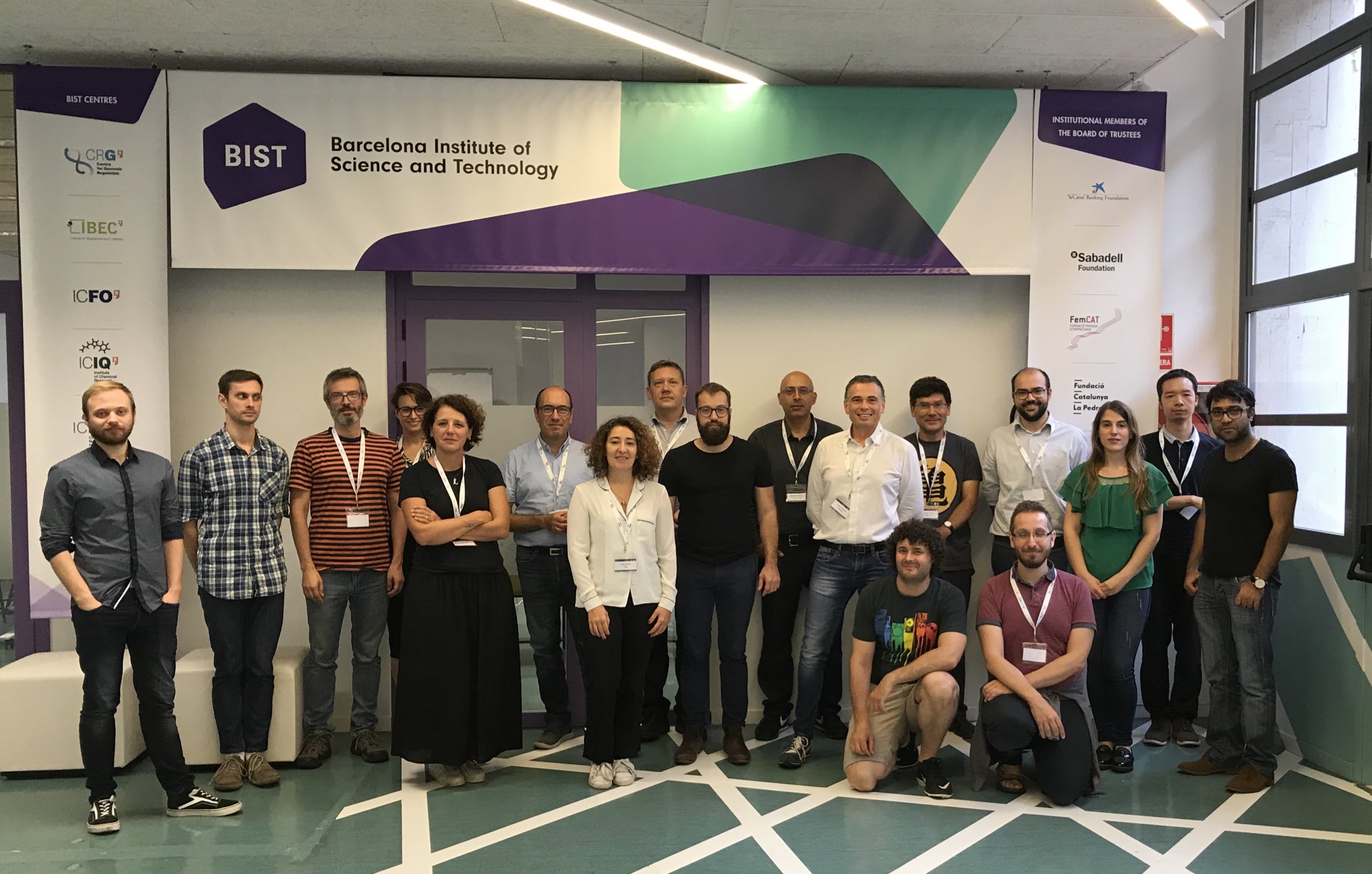INTERSECT is an EU project about Interoperable Material-to-Device simulation box for disruptive electronics. Their partners held a meeting last 26 and 27 of September at the BIST headquarters in Barcelona to discuss the state of the project and to plan their next actions.

The production and development of information-and-communication technologies based on silicon has historically taken place in the USA and Asia. However, the current and major worldwide drive for big data, machine learning and quantum computing is pushing away from this all-silicon platform, and provides a unique opportunity for European industry to deploy novel technologies based on innovative materials and devices.
In this context appeared INTERSECT: an EU project coordinated by CNR NANO and integrated by several institutions from Italy (CNR NANO, MDLab-AMAT), Belgium (IMEC), Germany (Fraunhofer-Institut, FMC), Switzerland (EPFL) and Spain (ICN2). The project wants to take advantage of the European leadership in materials’ modelling software and infrastructure to provide industry-ready integrated solutions, thus bridging the gap between academic innovation and industrial novel production.
Last 26 and 27 of September, INTERSECT organised a meeting that served their members to catch up with all the work being done and to elaborate new plans for the future. Located at the BIST headquarters, the meeting was hosted by ICN2’s director Prof. Pablo Ordejón. They covered issues such as physical systems or code development. The project aims to develop a so-called IM2D framework – an interoperable material-to-device simulation platform – that will integrate some of the most used open-source materials modelling codes (Quantum ESPRESSO and SIESTA) with models and modelling software for emerging devices (GinestraTM). The final goal is accelerating one order of magnitude the process of materials’ selection and device design and deployment.

